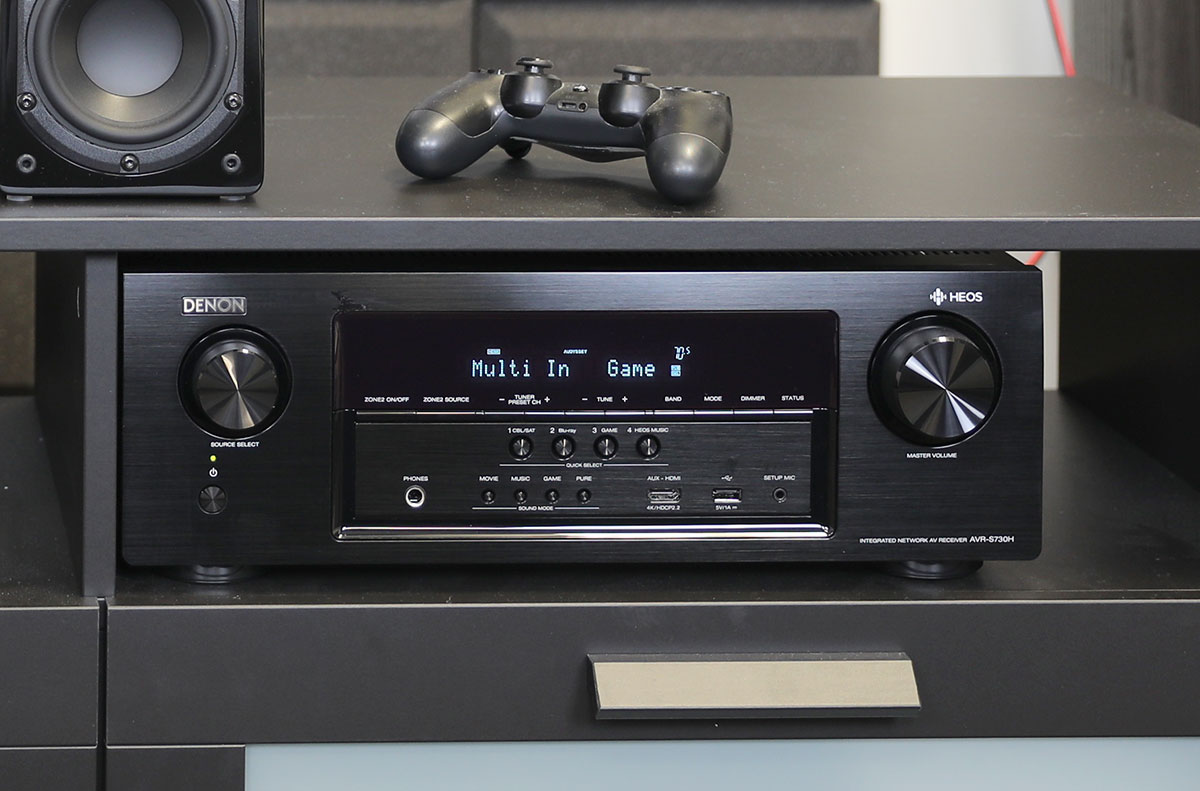

The Master Switch


The Master Switch
Choosing the right AV receiver can be a real mission. They can be intimidating, with a range of confusing features, even on the most affordable models. That’s where we come in. We know AV receivers back-to-front, and we’ve got a handle on what information you need to choose a good one. In this article, we’ve broken down the key steps to choosing an AV receiver, from the number of channels you need and how to get the right amount of power, to wireless audio and surround sound programs. And for a look at our top picks, see our article on the best AV receivers.
The first thing you need to know when choosing an AV receiver is the size of your room. This is the foundation: you’ll use it to work out how much power you need, how many channels you require, and at the very end of it all, how much money you’ll spend to get them. We should state at the beginning that asking how big a room is is like asking the length of a piece of string – there are no hard and fast rules here, no industry-standard guidelines. But we’ve tested dozens of AV receivers and home theater systems, and we’ve come up with some numbers which we think will suit most people.
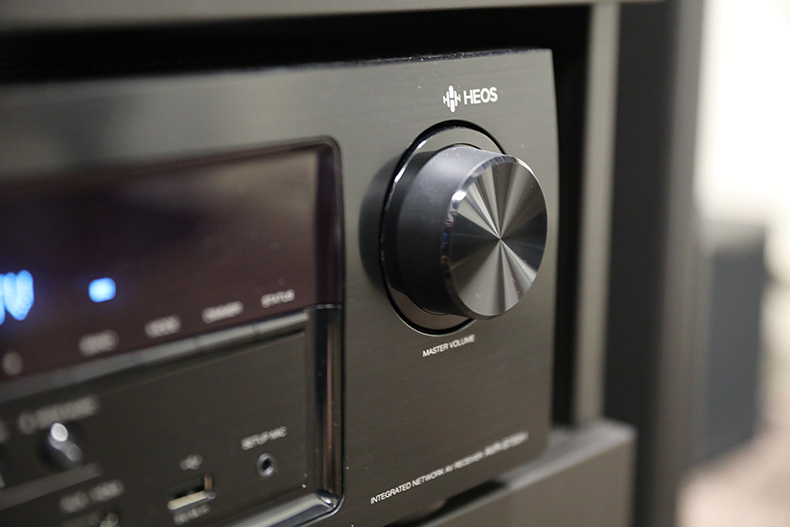
You can think of your room as either small, medium, or large. If it’s under 130 square feet, it’s a small room. If it’s between 130 and 250 square feet, it’s a medium room, and anything over 250 square feet is large. If you don’t have access to the floor plan for your home, the easiest way to do this is to crack out the tape measure, measuring the length and width of your room, and multiplying the two numbers together. Don’t worry if your room has an irregular shape – there’s a lot of margin for error here. Also, don’t worry about the furniture that is actually in the room. As long as you have an idea of the size, you’re good to go.
Before we go on, something to bear in mind is that our goal is to reduce the number of features on your AV receiver. Why? Because the more features it has, the more money you will pay. There’s no point in paying for features you’re not going to use, and if you want to buy the best AV receiver for you, the most important feature you need to pay attention to is the channels.
A channel on an AV receiver represents one speaker it can power. If a receiver has five channels, it will be able to power five speakers. If it has seven channels, it will be able to power seven speakers. You’ll often see channels expressed as 5.1 or 7.1; the number on the left of the period refers to the number of speaker channels a receiver can power, while the number on the right refers to the number of subwoofers it can connect to. Yes, you can have multiple subwoofers, and it's exactly as much fun as you think it is. Our current pick for the best budget AV receiver, the Sony STR-DH590, is a 5.2 system - five speaker channels, two subs.
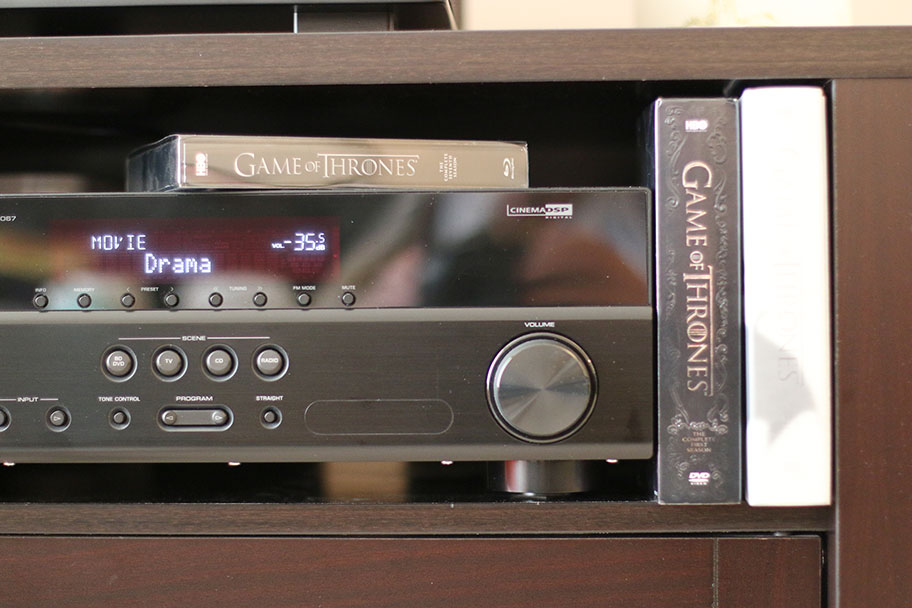
Most AV receivers, in fact, come in those two flavors: 5.1, and 7.1. The majority of AV receivers on the market will fit into one of those categories, as they’re the desired setup to work comfortably for most people. As you’ve probably already gathered, the size of your room dictates the number of speakers you can work with. There’s absolutely no point in putting seven speakers in a small room. You’ll not only crowd the sound, you’ll crowd the room itself with speakers and speaker wire. If you have a small or medium room, a 5.1 system will be more than sufficient. If you have a large room – or a medium room that’s close to 250 square feet in size – you can start experimenting with a seven speaker system.
One thing to bear in mind is whether you’re likely to move houses anytime soon, or if you plan on moving the system to a bigger room. If so, then it may be worth investing in a 7.1 receiver, which will comfortably run a basic 5.1 setup until you decide to upgrade. And boy, can you upgrade. Right now, there are AV receivers that can support 13 channels, which is just mind-blowing. And mind-blowingly expensive.
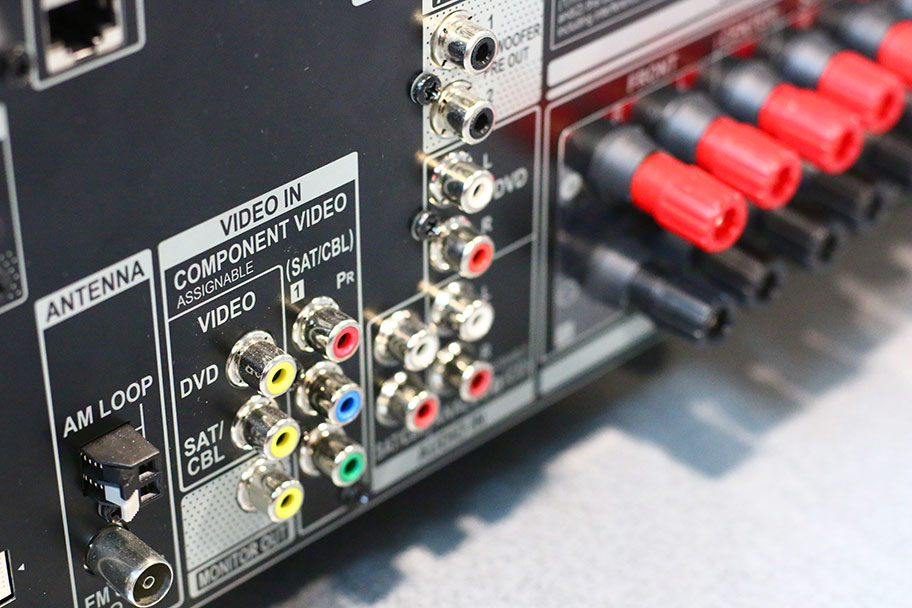
Every receiver outputs electrical power, measured in watts. You need these watts to make your speakers work. Very obviously, some AV receivers are more powerful than others, and the more power you have, the more money you will end up paying. But how much power do you need?
For whatever reason, receiver manufacturers always present the amount of power as two channels driven – as in, the amount of power the receiver puts out when only two channels are active. You might think that doesn’t make sense – after all, we’re driving five or perhaps even seven channels here - and you’d be 100% right. It doesn’t make sense. For example, one of the best receivers on the market, the Marantz SR6015, has a rated output power of 110 watts for two channels, but no rating for while it’s running on all channels...
On the surface, that appears to leave us unable to choose a receiver based on power output, until we realize that it doesn’t actually matter. Most modern receivers will be able to power just about any home theater system to comfortable volume levels without breaking a sweat. That’s just a fact of current technology. What it means for you is that you should pick a receiver with the lowest power rating you can get away with. The lower the power output, generally speaking, the less money you’ll spend. Think about it like this: the Marantz mentioned above has way too much power for a smaller room. Even if we did get the figure for the output on all channels, it would probably be too much. You don’t need 110 watts of two-channel power. What you need is something like the Denon AVR-S760H, a $350 receiver that puts out 75 watts of power. As long as you have the right number of channels for your speaker setup, you can get away with murder here. This is slightly less true, however, if you have a large room (over 250 square feet). If that’s the case, erring on the side of caution and getting more power than you need may be the best approach, as big rooms need big volume.
Now obviously, there are other reasons why the Marantz costs so much, like high-quality internal components and additional features, but the key takeaway is this: you should choose a receiver that outputs the right power for your room. And that means the least amount of power you can get away with.

The more money you spend on an AV receiver, the better the sound quality is likely to be. While this isn’t a universal truth, it’s a good guideline. Generally speaking, less expensive receivers are more likely to use off-the-shelf components, while pricier models tend to have components that are of higher quality. These components will provide better audio. While just about any /V receiver available right now has a passable level of sound quality, you can definitely get significant improvements if you spend a little more. We’ve broken down where the best AV receivers of this year succeed in terms of sound quality – and where they fail – in our regularly updated list.
One clever feature you’ll frequently see on even budget receivers is room calibration. This is a feature that uses an external mic (usually included with the receiver) to measure the reflections in your room, and adjust the sound of the receiver accordingly. It’s an exceptionally useful feature, especially if you have a room with an awkward or unusual shape. If you can afford a receiver that has it, you should absolutely go for it. It can make a huge difference.
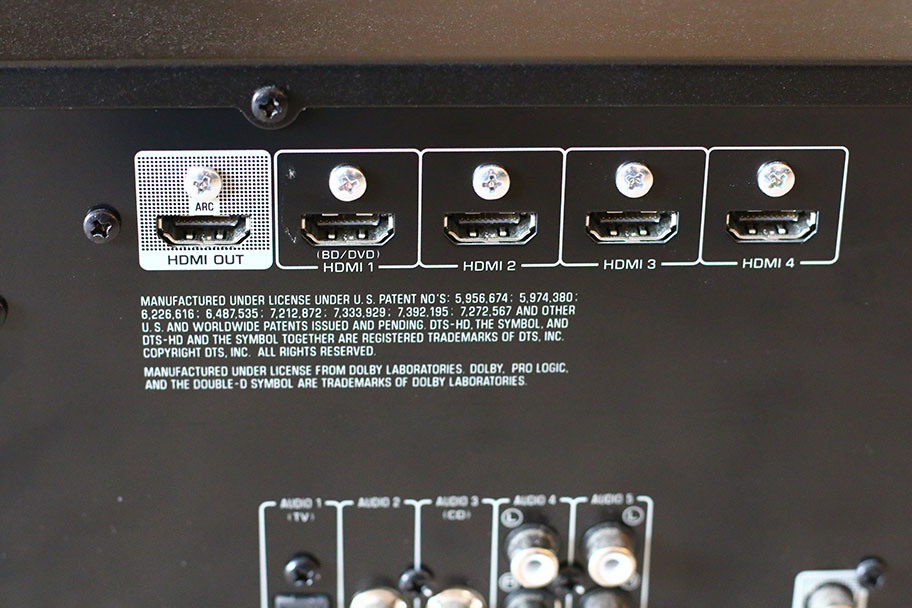
Every receiver will have a bank of HDMI inputs and outputs on the rear, as well as a couple on the front. You will use HDMI to connect your sources to your AV receiver, like a console or Blu-ray player, and to connect the receiver to your TV. HDMI is a ubiquitous connection in the home theater world, so it’s something you’ll definitely want to look at when choosing an AV receiver. However, as with everything on this list, the more you have, the more you pay. There’s no reason to buy an AV receiver with seven HDMI inputs if you only have a single console to connect it to. While it’s always a good idea to leave room for future upgrades, you should generally try to choose a receiver that offers the number of inputs you need. You’ll be paying extra for the ones you don’t use. For reference, it’s quite rare to see any receiver with less than four HDMI inputs.
Do you watch 4K content on your TV? If so, then you want to invest in a receiver that offers HDMI 2.0a or HDCP 2.2 certification. This will allow the right visual data to make it from your receiver to your TV, which means you get the clearest picture possible. There’s a lot more info on what 4K is and how it works, right here.
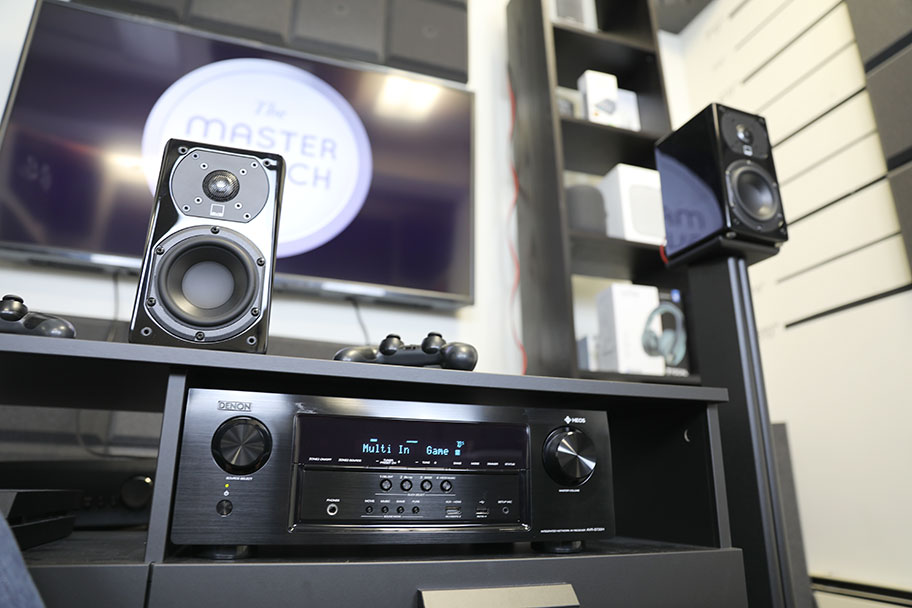
Surround sound doesn’t happen automatically. It relies on something called a codec – a software program that’s used by your receiver to figure out which sound goes where. There are dozens of surround sound codecs available, but fortunately, there are only really two that you need to know about: DTS:X and Dolby Atmos. They are both slightly different, and it’s worth knowing the differences so that you can choose the right receiver.
DTS:X is ideal for those with smaller 5.1 setups, or 7.1 setups without height speakers. It provides excellent surround sound for these setups and is far more widespread than its biggest competitor, Dolby Atmos. That particular codec has significantly better sound, but relies on height speakers – it won’t work without them, whereas DTS:X will. Think about it like this: DTS:X is better for smaller setups, while Dolby Atmos is the surround sound of choice for bigger rooms that can incorporate height speakers. If you’ve been in a movie theater lately, you probably heard Dolby Atmos.
When you’re choosing a receiver, make sure it can handle your preferred type of surround sound codec. There’s a lot more information on both DTS and Dolby, as well as other less common codecs, in our write-up of the best home theater systems of 2023.

You’d be hard pressed to find an AV receiver without some type of wireless connectivity these days – either through Bluetooth or Wi-Fi connection. This can be useful in several ways, not only for sending content through to a receiver from an external device, like a phone, but also in playing music. If you use streaming services like Spotify, then it’s quite possible to use your AV receiver and surrounding speakers as a music system as well. Most receivers have both Bluetooth and Wi-Fi – only budget models like the Pioneer VSX-534 don’t - and even then you’re likely to get included Bluetooth. If the receiver you’re choosing doesn’t have some type of wireless connectivity, you probably shouldn’t buy it.
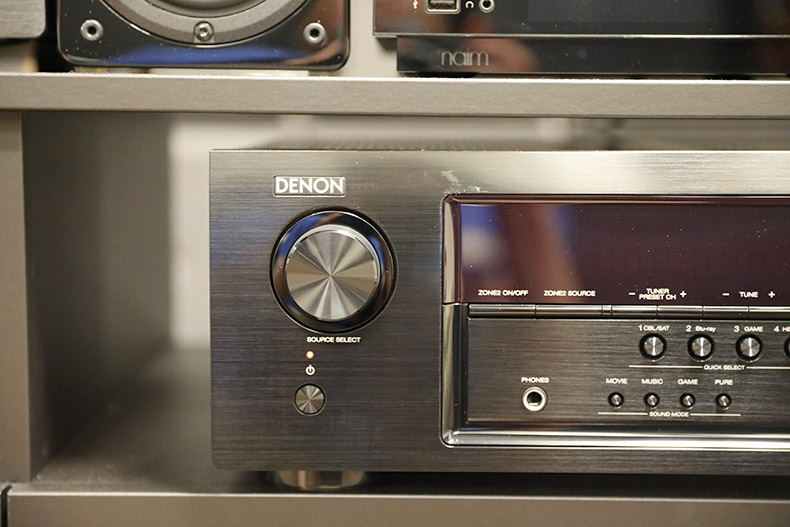
You often see receivers boasting about being able to power multiple ‘zones’ of speakers. What this means is that a receiver can transmit two separate audio streams at once. For example, you could be watching a movie in one room, while your child listens to music in another. To accomplish this, you need a receiver capable of 7.1 sound, and which has a dedicated multiroom feature.
While this sounds cool, in our experience, it’s rarely worth it. This is because of inherent limitations, like the fact that most receivers can’t send any digital audio to the second zone. If you’re listening through a turntable, that’s fine, but anything else is going to be tricky. And you will, of course, need to run speaker wire into the second room. Given these issues, we don’t think it makes sense to buy a receiver because of its ability to play music in multiple zones. There are far easier ways to do this, like investing in a good set of wireless speakers.
The difference here, fortunately, is very simple. A stereo amp is designed to run only two speakers and a subwoofer, making it ideal for a hi-fi system. It won’t be able to run a surround sound system like an AV receiver, which will have upwards of five channels and be capable of handling surround sound. If you buy a stereo amp for your home theater system, you’re going to find yourself in a bit of a pickle. If you want to buy one for your hi-fi setup, however, there are some fantastic models available.
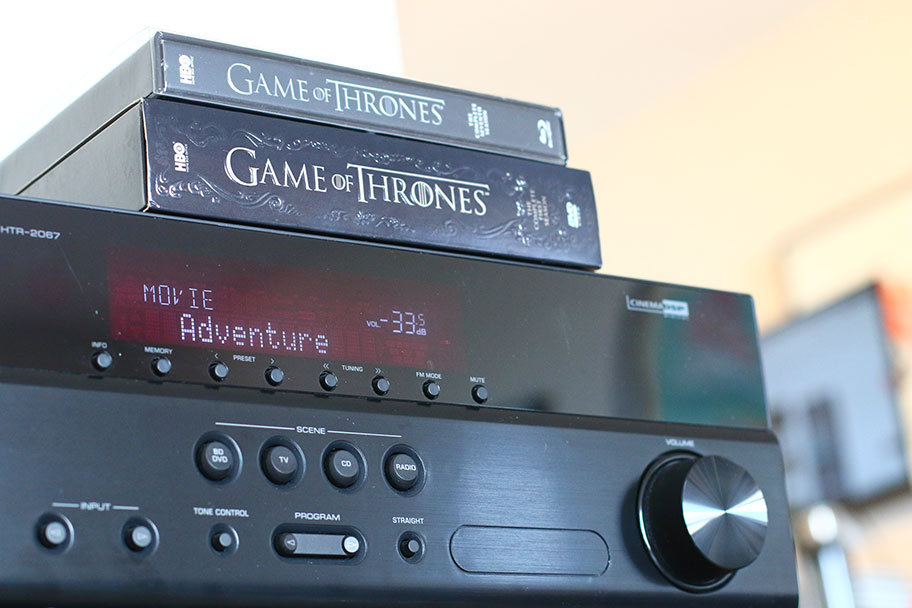
You don’t have to spend a lot of money to get a good AV receiver. While they’re undeniably complicated pieces of technology, it’s very possible to get a good one for as little as $250. It’s quite rare to find a model below that price, unless you look second hand – to be honest, things start getting a little dicey under that price point. It’s also possible to spend four figures on an AV receiver without breaking a sweat. We found that the most rewarding models sit between $1,000 and $2,000, although it’s very possible to find some receivers – like this monstrous 13-channel Denon AVR-X8500H – for nearly $4,000.
It’s quite rare to find AV receivers that cost more than this. It’s possible to buy what’s known as a surround sound processor, which is essentially an AV receiver without any amps attached. You’ll only buy one of these if you have a massive system with separate amps for each speaker, and if you do that, price is probably not your concern. By the way, AV receivers are the kind of product you can buy just about anywhere - even your local drugstore should have a few in the electronics section, and there will be many more available online.
See Our Top AV Receiver Picks